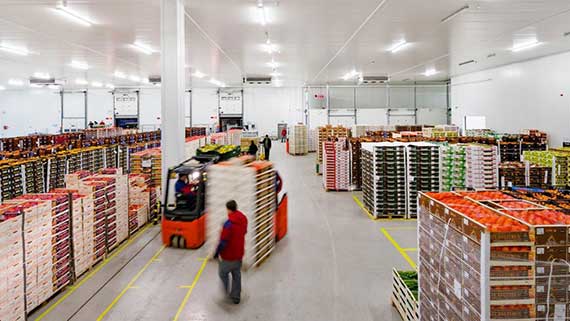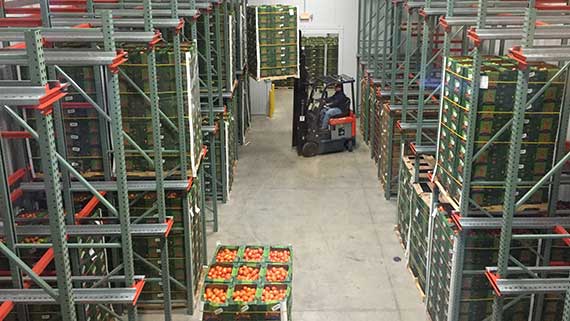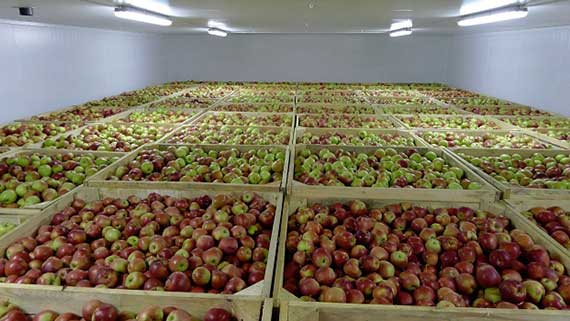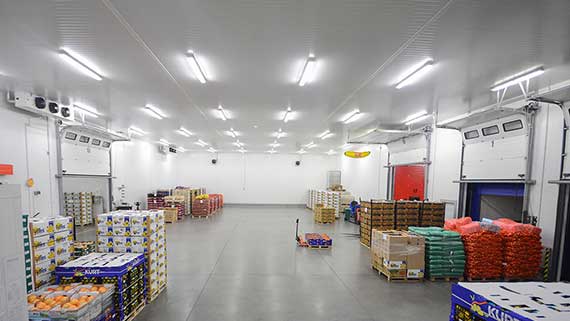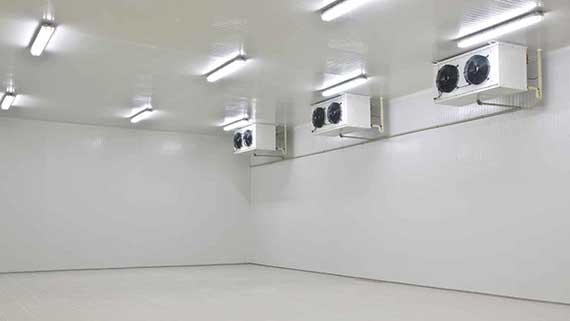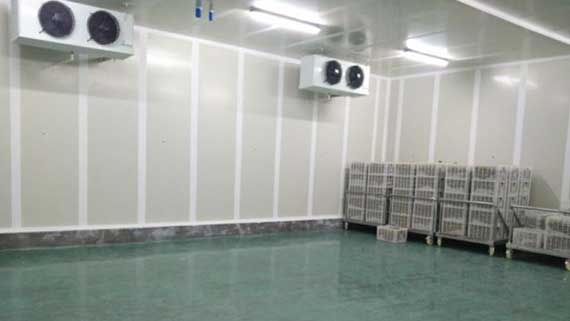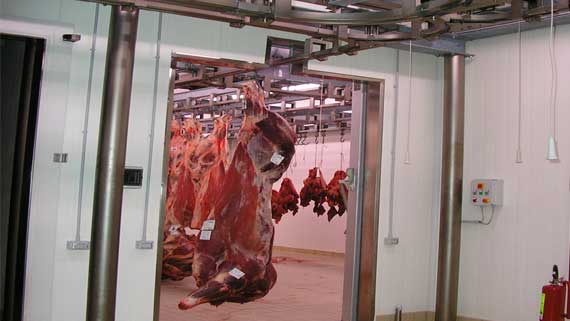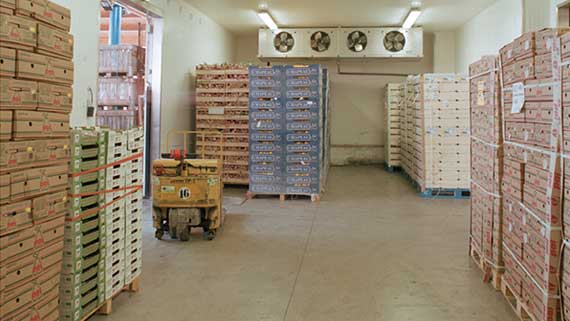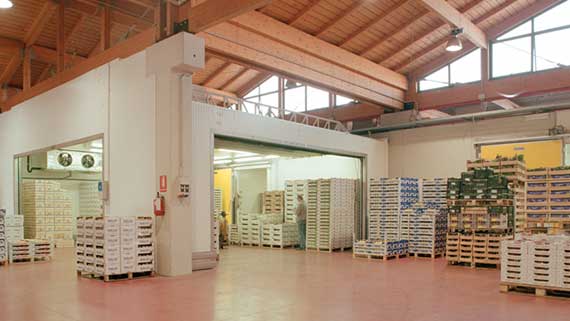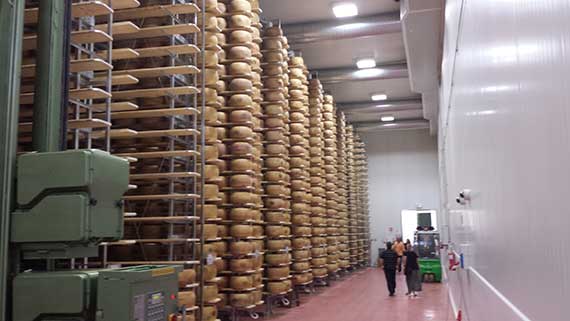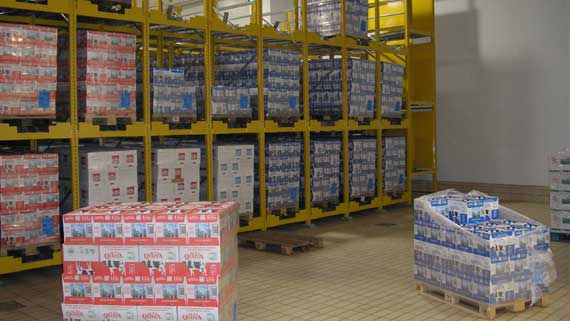Cold Storage
Cold Room; In order to maintain the freshness of the foods needed and to prolong the shelf life, cold areas where the ideal air is created with the help of the cooling devices of the space isolated from the external environment conditions.
The main purpose of Cold Storage Depots is to maintain the freshness and freshness of the product for a long time without disturbing its appearance and internal structure..
How Many Different Temperature Ranges Are There in Cold Storage?
Cold storage rooms generally have 4 different temperature ranges.
Room Cooling: +12°C / +16°C
It is generally preferred in product processing, packaging and shipping. These areas must be cooled in order to prevent the chain of the cold chain from deteriorating. It should be noted that the sound and air flow rate of the internal cooling unit selected should not affect the human comfort.
Cold Storage: -5°C / +8°C
It is the most commonly used temperature range in cold rooms. At these working temperatures, Fresh Fruits and Vegetables, Fresh Meat and Poultry Products, Milk and Milk Products, Fresh Fisheries, Bakery Products and Medical Drugs are kept.
Frozen Storage: -18°C / -25°C
At -40 ° C, shocked food should be stored in deepfreeze tanks after the freezing process. Ice cream, frozen fruits, vegetables, meat, poultry, fish products and frozen bakery products are maintained at these working temperatures. Note that the cooling load should be well calculated so that there is no dissolution in the frozen products.
Quick-Freezing: -35°C / -40°C
It is the process of reducing the core temperature of foods to be kept for a long time to -18 ° C. After the Core temperature of the product reaches -18 ° C, it must be shipped to the Frozen Storage tank. -40 ° C Shock rooms should not be used for storage purposes. Attention should be paid in these rooms, cooling device selection. When selecting the cooling device, the type, quantity, inlet temperature, room size and target shock time of the product should be considered. Shock life should be kept short so that the shelf life of the food will be longer.
How Cold Storage Depot is manufactured?
First of all, architectural settlement project and team projects are drawn according to the type of product to be kept and the storage capacity. After the construction of the foundation and the steel construction or concrete prefabricated construction is completed, Cold Storage Wall and Ceiling Panels are installed. After the installation of the panels, the floor insulation is laid and the ground concrete is poured.
After the above operations, Cold Room Doors are installed and installed. Finally, after the cooling device is installed and commissioned, it is adjusted to the desired temperature and delivered.
Cold Storage Rooms Prices and Cost Calculation;
When calculating the cost of cold room, calculation is made according to the criteria described in detail below. To count them;
Product Type to be stored (Fruit, Vegetables, Meat, Dairy Products, Frozen Products etc.))
Amount to be stored (500 Tons, 1,000 Tons, 2,000 Tons, 5,000 Tons etc)
Location and Climate Conditions of the Facility
In accordance with the above basic and additional information and the demands of our Customer, we can calculate the cost of Cold Storage by making calculations by our Expert Engineer team in our Project Unit.
With an example;
Capacity: 1.500 TON Capacity Pomegranate Cold Storage Cost
Location: Mersin
Warehouse Area: 1.000 m2 ( 6 piece*167 m2 Cold Room)
Warehouse Height: 7,50 meter
Panel Thickness: 100 mm
Storage Temperature: +4°C
In the light of this information, we determine the calculation of the cost of cold storage by selecting panel calculation and device selection.
How Calculation of Practical Cold Storage Room Cooling Load?
The Cold Room is calculated by calculating the volume of the chamber (m3) by multiplying the dimensions x length x height. The cooling load of the room is calculated for the desired operating temperature according to this volume (Volume) from the technical data sheet below. According to this cooling load, appropriate device selection is made.
How Should the Cold Storage Project be?
A good and convenient Cold Storage is possible with a well-designed project. The first step in the cold storage projects is the type of the product and the amount of storage. This basic two information is quite important. The storage area is then determined according to the amount of storage given.
As an example for 1,000 tons of Apple Project;
Storage Temperature: 0°C
The apple is estimated to be approximately 200 kg by volume of 1 m³.
We will need about 5,000 m³ of volume for 1,000 tonnes of apple preservation.
When we put the apple crates in 6-row and 3 pallets, the height will be 600 cm. If we calculate 100 cm ventilation space for the evaporator fans from the top, the internal net height should be minimum 700 cm.
5.000 m³ ÷ 7 m altitude = 715 m²
Since 715 m² will be a large warehouse alone, we design warehouses with an equal capacity of 6 x 6 units in order to be useful.
We can design a Cold Storage Project by leaving a 5 meter wide corridor in the middle so that 3 of the 6 warehouses and 3 of them are on the left.
Industrial Cold Storages
Cold Stores vary according to the storage conditions of the product to be stored. The difference from cold rooms is to allow for larger areas, high shelving and stacking. It provides a wide range of storage facilities for manufacturers that are mostly integrated or stocked. The sectors such as food, chemical and pharmaceutical industries need Cold Storage. KARAL Industrial Refrigeration Systems will be established in Industrial Cold Warehouses which need to be used in the type of panel, installation and maintenance of technical details in all details.
Cold Storage Usage Areas;
- Bakery products,
- Milk and milk products cooling systems,
- Potato and onion ventilation and cooling systems
- Banana wrap chambers and green banana enclosure
- Fruit and vegetable processing and storage cooling systems
- Logistics warehouse cooling systems
- Climatic test rooms
- Poultry slaughterhouses cooling systems
- Meat and meat products cooling systems
- Frozen Food Production and
- Storage Cooling Systems
- Marine processing and storage refrigeration systems
- Atmosphere Controlled Cold Storage Systems
